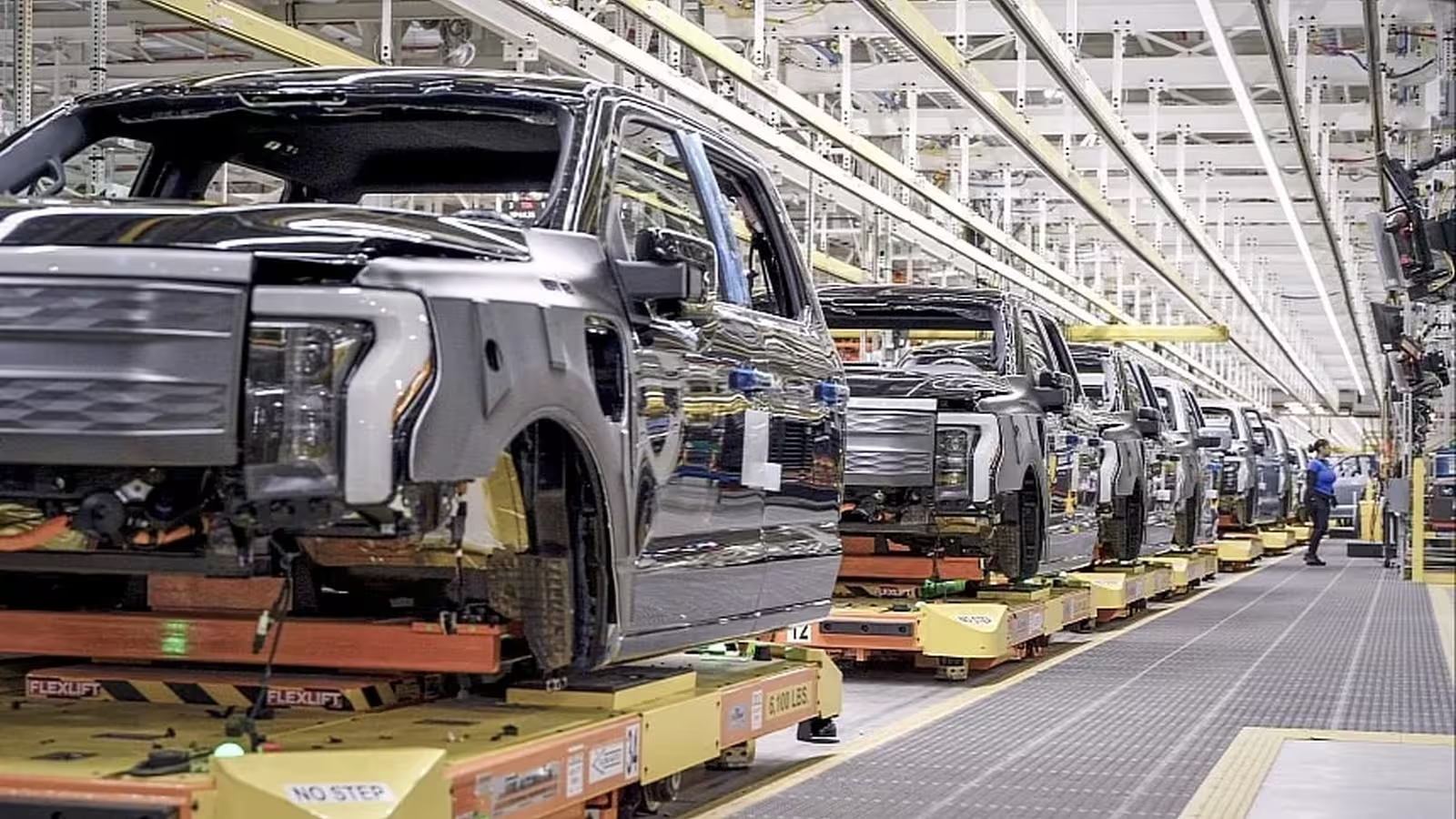8 Minutes
The Global Electric Vehicle Boom Versus America's Slowdown
The automotive world is rapidly changing, with electric vehicles (EVs) and advanced battery technologies propelling most regions into a new era of sustainable mobility. Yet, while the rest of the world accelerates toward electrification, the United States finds itself at a crossroads—hesitant, and in recent months, increasingly resistant to embracing EVs. This surprising shift is evident even as electric cars grow more advanced, more affordable, and more desirable on paper. So, why has the American EV market begun to lose traction just as the technology matures?
EV Sales in 2025: A Stark Contrast between America and the World
According to recent research from Rho Motion, over 9 million plug-in vehicles—both battery electric vehicles (BEVs) and plug-in hybrids (PHEVs)—were sold globally in the first half of 2025. That’s a robust 28% jump compared to the same period in 2024. China leads the charge, delivering a record 5.5 million EVs—a 32% year-over-year rise. Europe follows with more than 2 million EVs registered, representing a healthy 26% growth.
North America, however, tells a different story. Less than a million EVs found buyers in the region, marking a meager 3% rise. Particularly concerning is Canada’s sharp 23% decline, only partly balanced by gains in Mexico (up 20%) and the US (up 6%). This stagnation in the face of global EV growth signals deeper issues in America's relationship with electrification.
Why the US Remains Reluctant about Electric Cars
The flatlining of electric vehicle adoption in the US is not simply a matter of pricing or technology. Despite more affordable EVs, longer ranges, and faster charging, many Americans remain unconvinced. Underlying cultural factors, misinformation, and infrastructure concerns form barriers that carmakers and policymakers alike are struggling to overcome.
The Power of Perception: Fact and Fiction in the EV Narrative
Surveys regularly show that many prospective buyers view EVs as less than 'real cars,' dismissing them as mere household appliances. Urban myths persist: exploding batteries, short lifespans, and interminable charging times. While price used to be a top concern, conventional vehicles have seen their own costs rise, making many EVs more competitively priced—yet skepticism lingers.
Grid Infrastructure: A Unique American Challenge
One critical difference between the US and other EV-forward regions is the national power grid. Europe’s interconnected systems and China’s unified grid create resilient energy networks ideal for electrification. By contrast, America's fragmented grid structure—managed state by state, often with isolated energy 'islands'—leaves many consumers wary of relying on electricity. High-profile outages and politicized blame-shifting, especially targeting renewable energy, have contributed to public distrust.
The Impact of Policy and Incentive Rollbacks
The Biden administration's incentives spurred some temporary EV market growth, but looming deadlines and recent legislative changes—like the phase-out of tax credits and stricter tariff policies—have chilled the market. Without these supports, purchasing an electric car becomes a pricier proposition just as macroeconomic headwinds mount. This policy reversal, compounded by uncertain emissions regulations, threatens to leave American automakers stranded as global competitors accelerate their EV strategies.
Changing Dynamics Among Automakers: Established Brands and Startups
For traditional automakers, the US EV slowdown is reshaping product plans and investment timelines. Many global car brands are scaling back their American electric ambitions:
- Ford has significantly reduced its EV commitments, pivoting back to gas and hybrid models that are less costly to build and more profitable in the short term.
- Honda and Nissan have similarly retreated from their EV expansion strategies in the US, with Honda canceling plans for new SUVs and partnerships, and Nissan pausing new model launches amid financial struggles.
Smaller and newer automakers are even more vulnerable. Without internal combustion engine (ICE) product lines to fall back on, these startups face existential threats.
Spotlight: Rivian’s Make-or-Break Moment
Rivian emerged as a promising American EV challenger, targeting a sweet spot in the compact SUV and truck market. Yet, the end of federal tax credits jeopardizes the company’s delicate pricing equation. To compete with the Tesla Model Y—currently selling its most expensive Long Range AWD trim at $48,990—Rivian must keep its new R2 and R3 models priced under $45,000, sacrificing margins to stay competitive. The highly anticipated R2, even with technical advances like a tri-motor setup, may still struggle if perceived value doesn’t outrank the established performance of Tesla’s offerings.
Slate Auto: The Budget EV Gamble
Slate Auto, a startup with bold ambitions and funding from high-profile investors, promised the lowest-cost EV in America. Changes in subsidy laws, however, forced the company to revise its plans. The base model, originally slated to cost under $20,000, will instead launch "in the mid-twenties" when it debuts in 2026. To maintain such a price point, Slate Auto shaved off many features—power windows and even a basic radio are extras. The risk? Once configured with comparable amenities, Slate’s EV may end up far from its budget-friendly reputation, especially when rival offerings like the Ford Maverick pickup deliver more utility for less money.
Lucid Motors: Surviving with Global Markets and Capital
At the premium end, Lucid Motors faces less immediate danger from US policy shifts. Its higher-priced sedans and crossovers target luxury customers, and the company is buoyed by substantial investment from the Saudi Public Investment Fund. Lucid is now exploring even more avenues for growth, including autonomous vehicle projects with a new $300 million investment from Uber and additional capital from global partners.
Vehicle Specifications and Design: How American EVs Stack Up
Range, Performance, and Pricing Benchmarks
As vehicle electrification matures, buyers expect more—not just in technology but in user experience. American EVs, especially those from Tesla, Ford, and Rivian, now routinely offer ranges over 300 miles, state-of-the-art infotainment systems, and robust performance metrics (0-60 mph in under 4 seconds for top trims). However, maintaining these standards while containing price has proven increasingly challenging without consumer incentives.
Interior and Feature Competitiveness
Where American EVs sometimes falter is in perceived build quality and interior luxury compared to European competitors. Entry-level models that strip out basic conveniences risk alienating mainstream buyers, making value-for-money comparisons even more critical. Vehicles from emerging players such as Slate Auto are under scrutiny: can a $25,000 EV with minimal amenities genuinely compete with better-equipped gas or hybrid crossovers?
The Shrinking EV Model Diversity: A Downward Spiral?
One of the most concerning effects of the US EV stall is the declining variety of available models. As sales plateau, automakers withdraw riskier or less profitable vehicles, leaving buyers with fewer choices. This further depresses demand, potentially creating a negative feedback loop: higher prices, fewer models, increased market skepticism.
Battery Industry Uptick: A Silver Lining Amid EV Headwinds
While demand for new electric cars has cooled, investment in next-generation battery factories in the US continues apace. Recent legislative tweaks haven’t eliminated all battery incentives, but have imposed graduated restrictions. This triggered a race among giants like LG, Panasonic, Ford, and Tesla to build advanced battery plants, especially those focusing on lithium iron phosphate (LFP) chemistry. LFP batteries offer better affordability, longevity, and safety—a crucial factor if EV prices are to remain accessible without government subsidies.
Many of these projects cross-pollinate with international expertise. Tesla and Ford, for example, are adopting technology licensed from Chinese battery leader CATL, although new laws complicate qualification for incentives. Some battery lines are being repurposed for stationary energy storage, as automakers re-evaluate their EV priorities in the face of uncertain demand.
Market Positioning and Competitive Landscape
Globally, the US is at risk of falling behind not only in EV adoption but also in automotive innovation and energy transition. Chinese and European manufacturers enjoy stronger policy support, broader consumer acceptance, and better-integrated supply chains. American startups and legacy brands face a strategic crossroads: double down on innovation or retreat into old profit centers as emissions standards and buyer demand shift elsewhere.
Comparative Analysis: US Versus Global EV Markets
- China: Dominates with affordable, abundant PHEV and BEV offerings, strong government support, and rapid consumer uptake.
- Europe: Maintains momentum with coordinated infrastructure and regulatory policies, driving sustained EV market share growth.
- United States: Faltering due to policy rollbacks, fragmented infrastructure, mixed public enthusiasm, and increasing competition from hybrid and gasoline vehicles.
The Road Ahead: What Will Drive the Future of American Electrification?
Despite current challenges, many automotive insiders believe the long-term trajectory still points toward electrification. As battery prices continue to fall, new models debut with greater range and utility, and as energy grids slowly upgrade, the economic and performance arguments for EVs remain compelling. However, unless underlying policy uncertainty, infrastructure challenges, and cultural headwinds are addressed, the US risks lagging even further behind global counterparts.
EVs are more than just a tech trend—they’re the future of mobility, performance, and sustainability. For America to remain a global automotive powerhouse, it must reignite investment, dispel myths, and build consumer trust in electrification.
In Conclusion: Can America Catch Up?
The current setback in US electric vehicle adoption is not irreversible, but overcoming it will require a coordinated effort across government, industry, and consumers. As the world races toward electric mobility, the American car market stands at a tipping point—a moment that will define its automotive legacy for decades to come. Will the US embrace the charge or park in the slow lane? Only time will tell, but car enthusiasts, investors, and policymakers worldwide will be watching closely.
Source: autoevolution



Comments